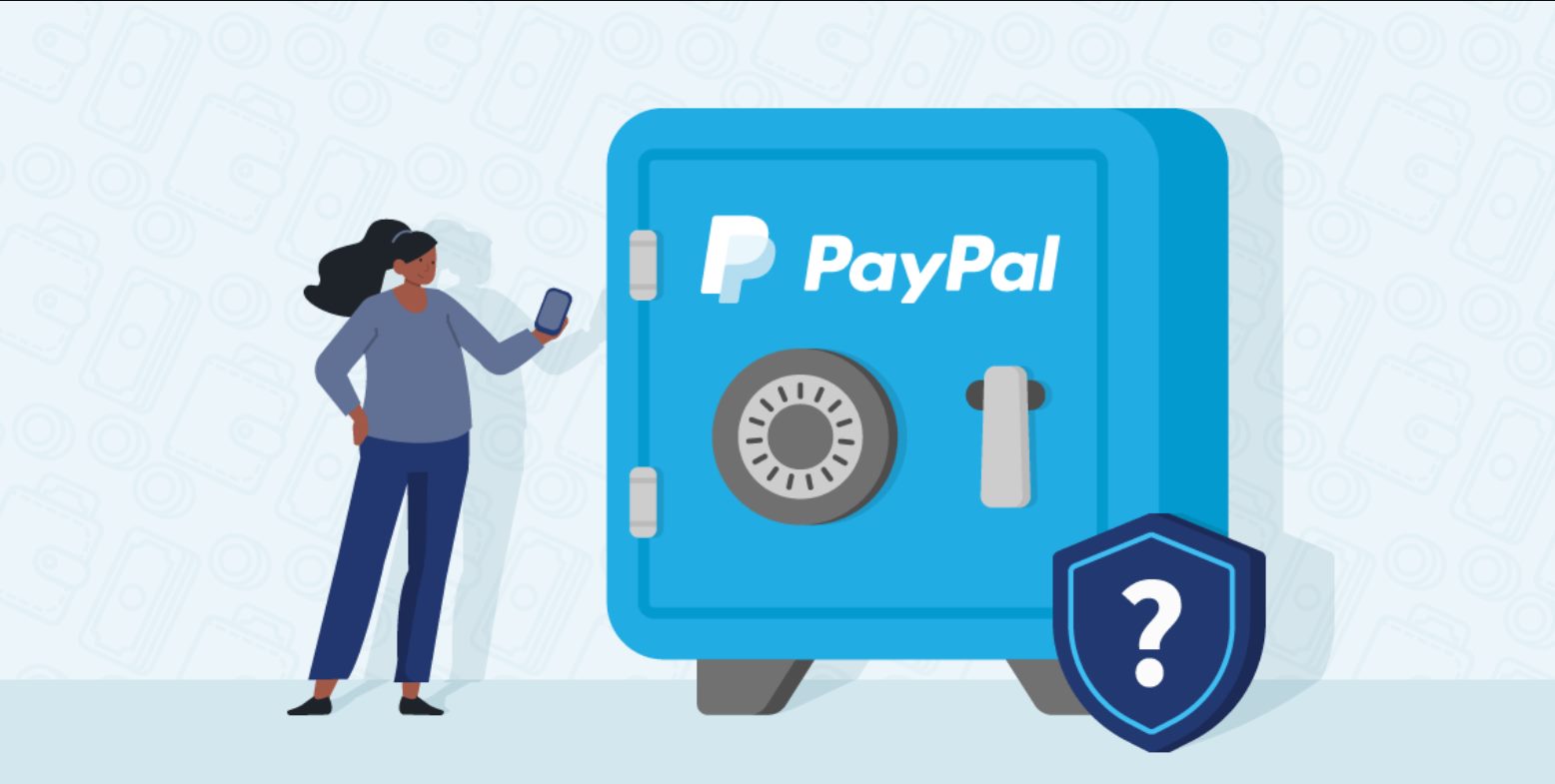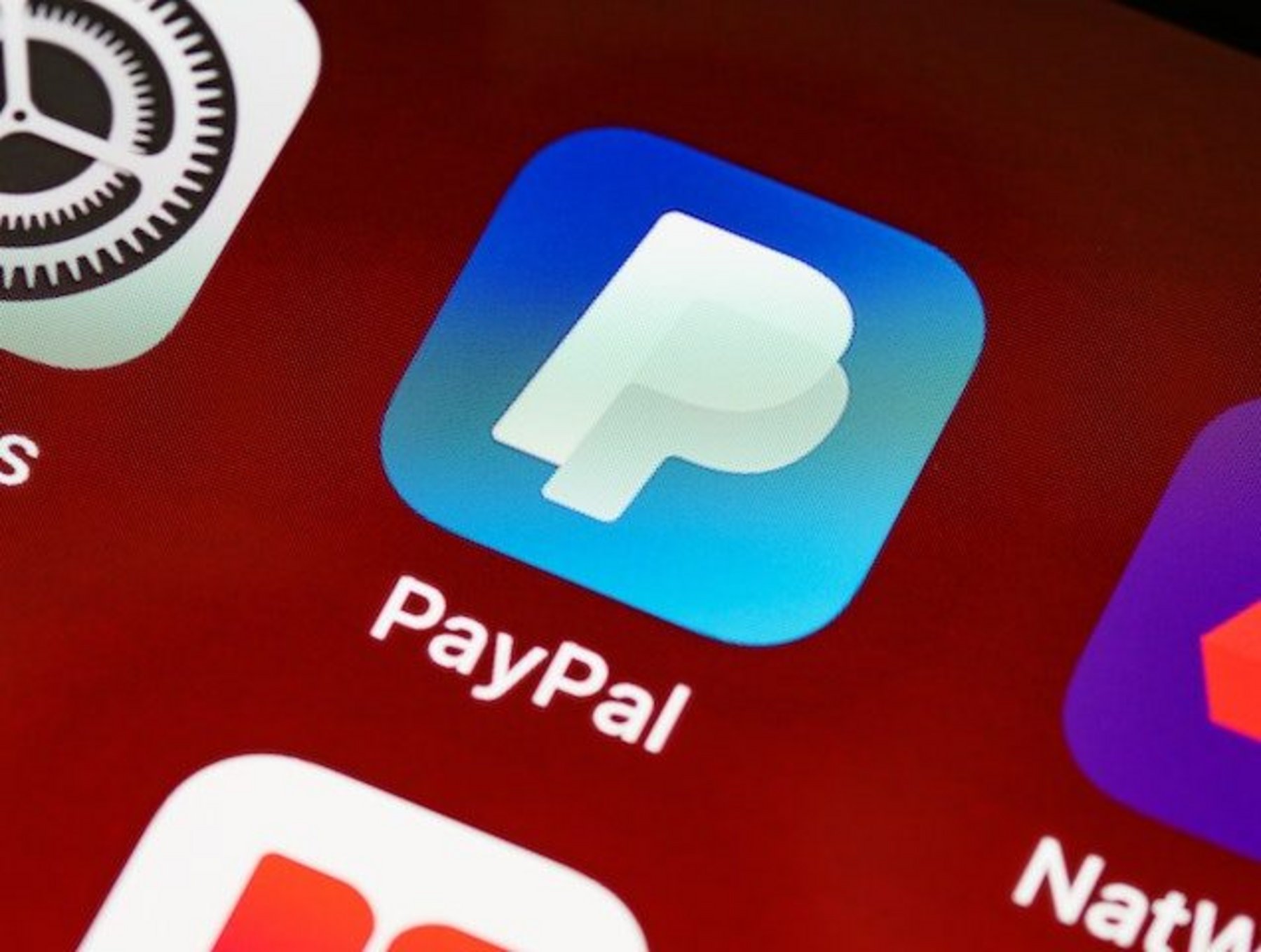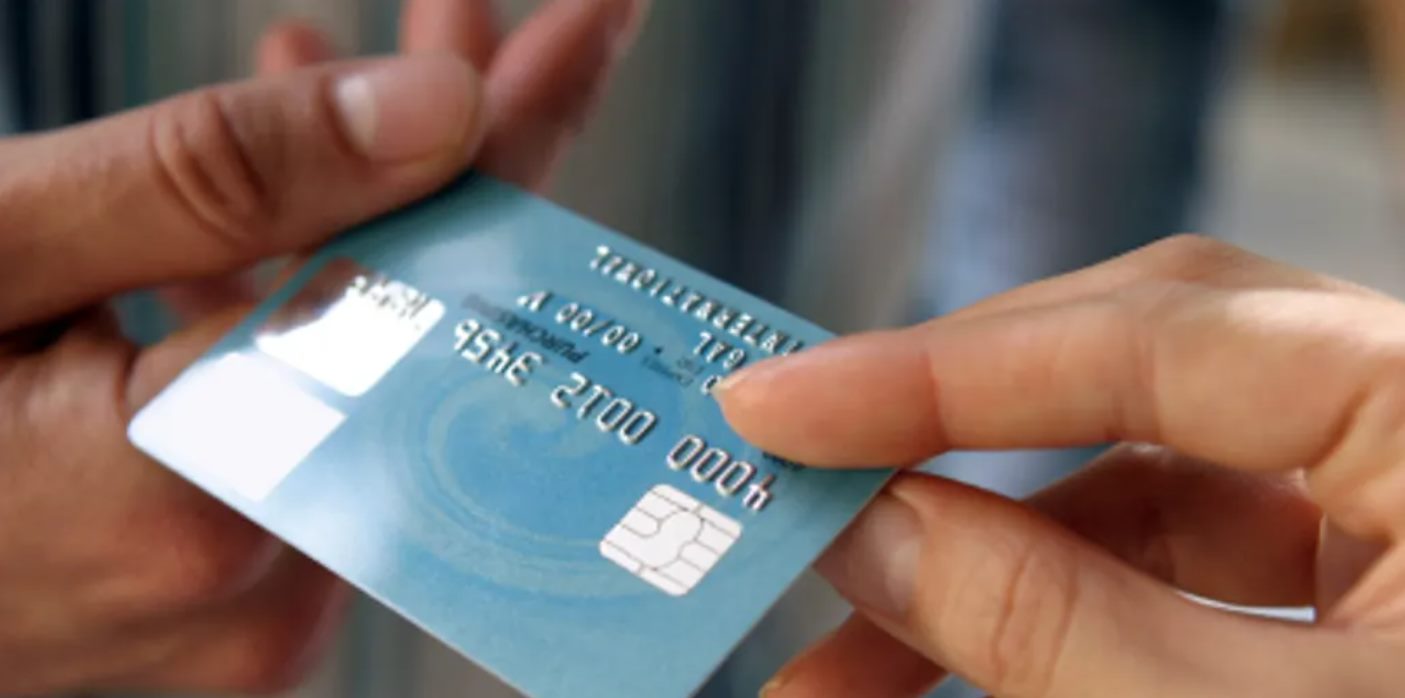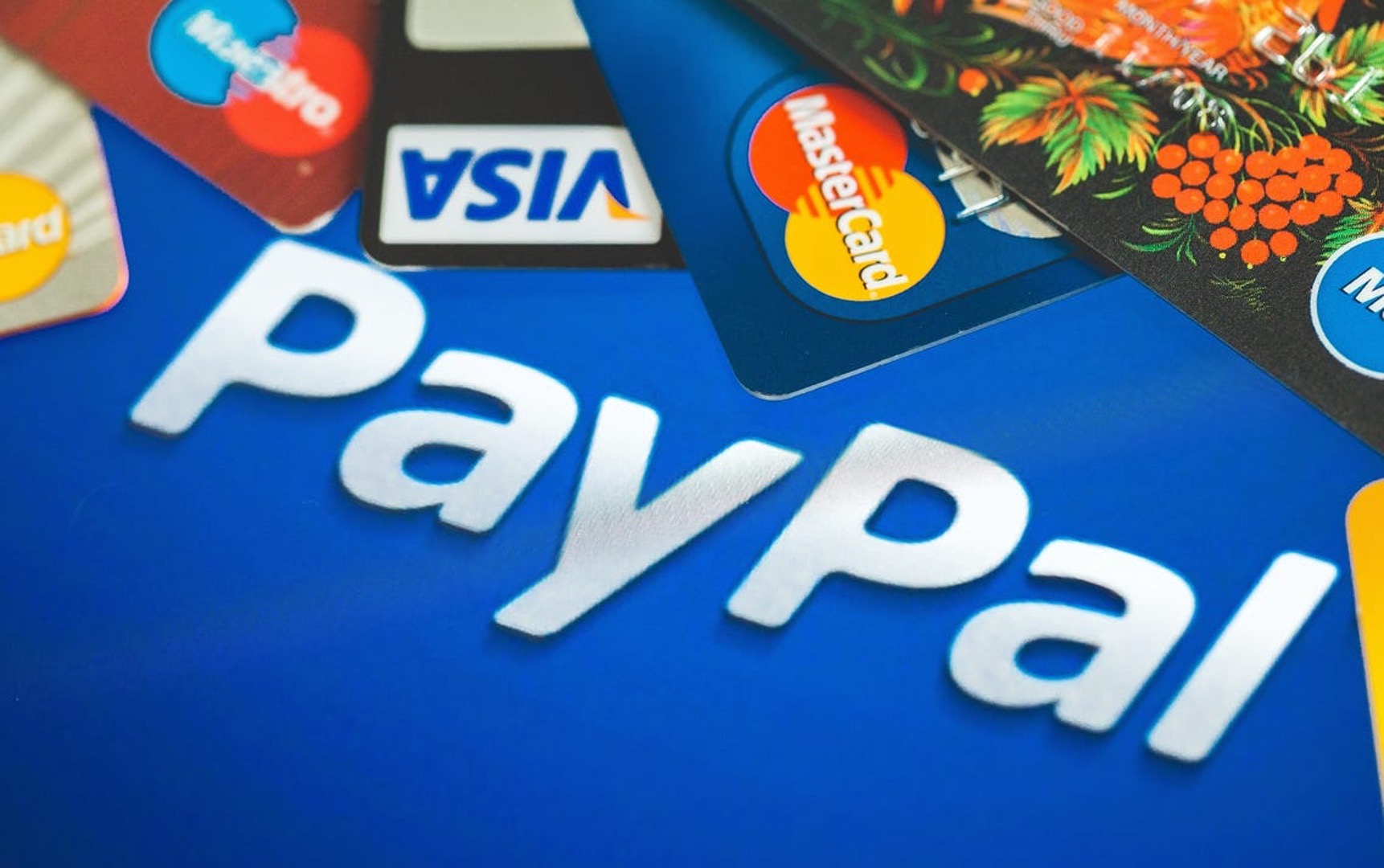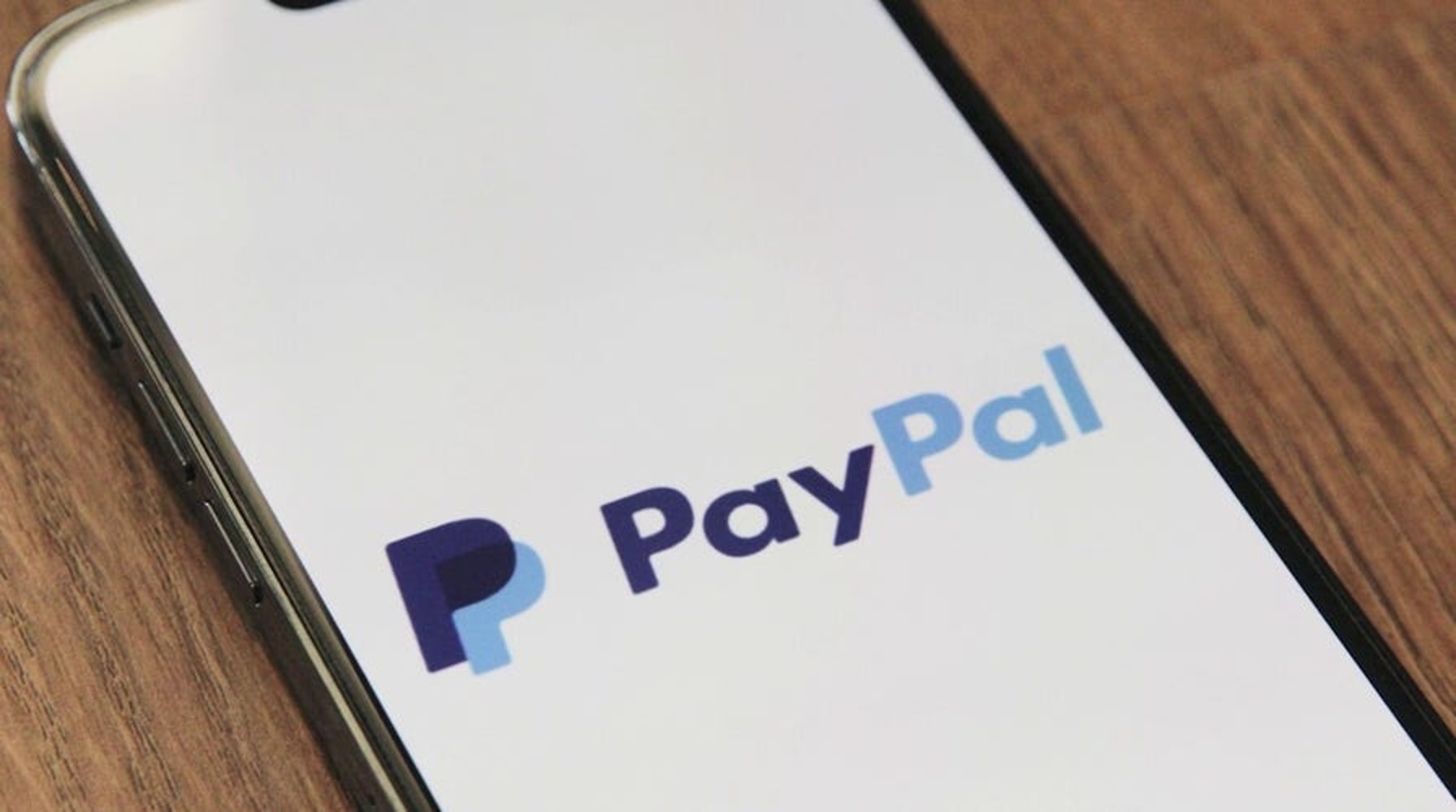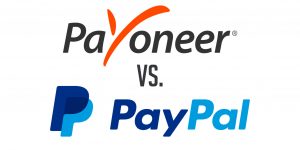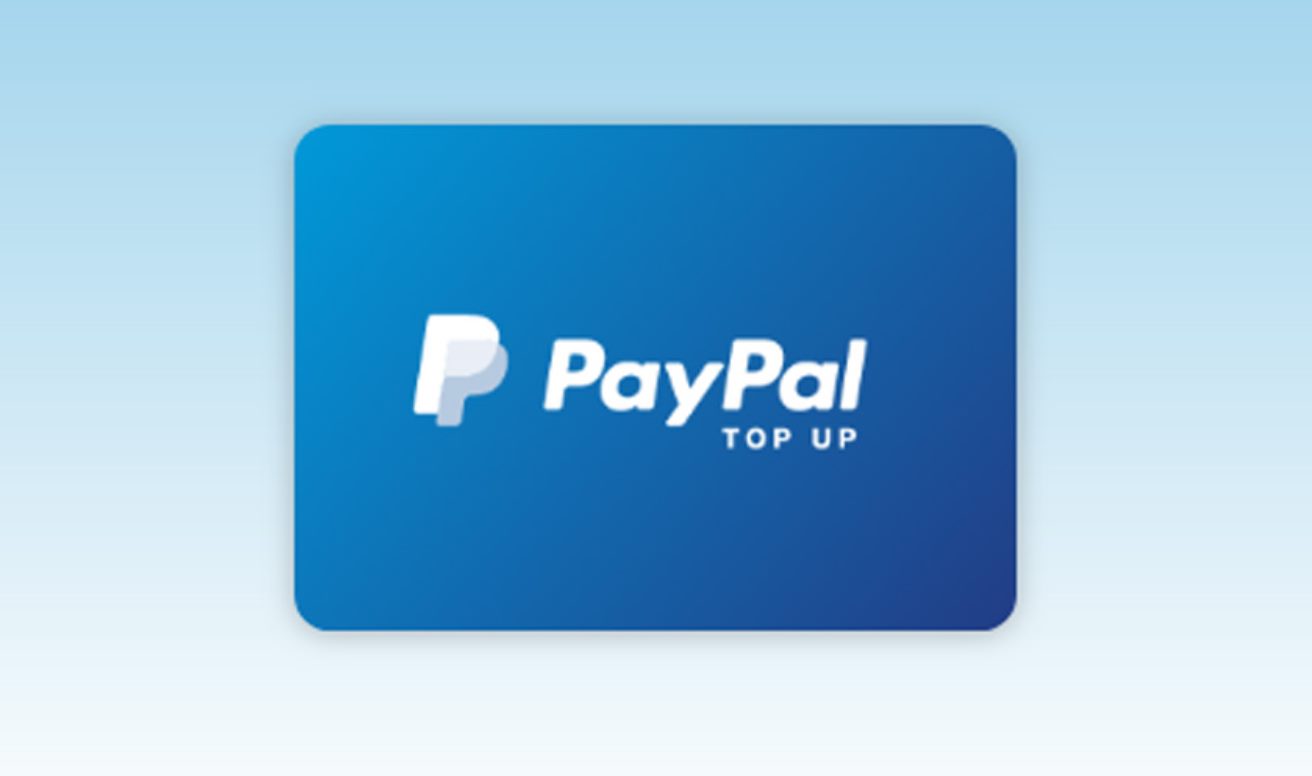Introduction
Welcome to our in-depth guide on the safety and security of PayPal, one of the most popular online payment platforms. With the rise of e-commerce and the need for secure online transactions, PayPal is often the go-to option for millions of individuals and businesses worldwide. However, with cybercrime and online fraud increasing, it is vital to understand how PayPal protects its users and what precautions you can take to ensure a safe experience.
In this article, we will explore the various security features and measures implemented by PayPal to safeguard your financial information. We will also delve into the potential risks and vulnerabilities associated with using PayPal, allowing you to make an informed decision about its usage. Whether you are an avid PayPal user or considering using the platform for the first time, this guide aims to equip you with the knowledge necessary to navigate the digital realm securely.
Before we delve into the intricacies of PayPal’s security measures, it is essential to understand its history and how it works. PayPal was founded in December 1998 as Confinity by Max Levchin, Peter Thiel, and Luke Nosek. Initially conceived as a software security company, Confinity merged with X.com, an online banking company founded by Elon Musk. Eventually, the focus shifted toward creating a secure digital payment system, leading to the birth of PayPal as we know it today.
PayPal revolutionized online payments by offering a convenient and secure way to send and receive money without sharing sensitive financial information. It acts as an intermediary between buyers and sellers, allowing transactions to occur seamlessly in the e-commerce world. PayPal users can link their bank accounts, credit cards, or use their PayPal balance to make purchases or send money to others.
As we embark on this journey through PayPal’s safety measures and potential risks, it’s important to note that while PayPal strives to provide a secure platform, no online payment method is entirely risk-free. By staying informed and implementing recommended security practices, we can mitigate these risks and ensure a safer online experience.
History of PayPal
PayPal has come a long way since its inception in 1998. Initially founded as Confinity, a security software company, the company later merged with X.com, an online banking company founded by Elon Musk. Under the visionary leadership of Musk and the combined expertise of its founders, PayPal began its journey to revolutionize online payments.
In October 2000, PayPal went public and quickly gained popularity as an efficient and secure alternative to traditional payment methods. Its user-friendly interface and ability to process transactions in multiple currencies attracted a diverse range of users, including small businesses, individual sellers, and online marketplaces.
PayPal’s breakthrough came when it was acquired by eBay in October 2002. This acquisition not only accelerated the company’s growth but also solidified its position as a leading online payment platform. The integration of PayPal into eBay’s marketplace opened up new avenues for buyers and sellers to transact securely and easily.
Over the years, PayPal has expanded its reach and functionality. It introduced features such as One Touch, which allows users to make purchases with just a single click, without the need to re-enter payment information. The company also launched its mobile app, enabling seamless payments on the go.
In addition to its association with eBay, PayPal has partnered with numerous other online platforms and marketplaces to facilitate secure transactions. This has further bolstered its reputation as a trusted and widely accepted payment method.
PayPal’s success has not gone unnoticed in the financial world. In 2015, PayPal separated from eBay and became an independent company once again. This move allowed PayPal to forge partnerships with various financial institutions and expand its services beyond online payments. Today, PayPal offers an array of financial products, including prepaid debit cards, business loans, and even cryptocurrency trading.
Continuously adapting to the evolving needs of its users, PayPal has remained at the forefront of the digital payments industry. Its commitment to innovation and security has earned it the trust of over 400 million active users worldwide. As online commerce continues to grow, PayPal is well-positioned to continue facilitating safe and convenient transactions for individuals and businesses alike.
How does PayPal work?
At its core, PayPal acts as a digital wallet that allows users to securely send and receive money online. Whether you are making a purchase on an e-commerce website, sending funds to a friend, or receiving payments for goods or services, PayPal streamlines the transaction process.
To use PayPal, you first need to create an account by providing your email address and setting a password. Once your account is set up, you can link it to your bank account, credit or debit card, or add funds to your PayPal balance.
When making a payment with PayPal, you have a few options. If the website or seller accepts PayPal, you can select the option to pay with PayPal during checkout. Logging into your PayPal account and confirming the payment will complete the transaction. The amount will be deducted from your chosen funding source, whether it’s your PayPal balance or a linked bank account or card.
If you are sending money to another PayPal user, you can do so by entering their email address or mobile number associated with their PayPal account. Similarly, if you receive a payment, the funds will be credited to your PayPal account, and you can choose to keep the funds in your account for future transactions or withdraw them to your linked bank account.
One of the key benefits of using PayPal is the ability to send money internationally. PayPal’s robust infrastructure supports transactions in multiple currencies, making it a convenient option for individuals and businesses operating across borders.
PayPal also offers a range of additional features to enhance the user experience. For example, PayPal One Touch allows users to make purchases without repeatedly entering their payment information. Once enabled, eligible transactions on participating websites or apps are completed with just a single click or tap.
In terms of fees, PayPal generally charges a small percentage of the transaction amount or a fixed fee for certain types of payments, such as receiving payments for goods or services. It’s important to review PayPal’s fee structure and any applicable charges before using the platform.
Overall, PayPal simplifies online transactions by providing a secure and convenient payment method. Its widespread acceptance, user-friendly interface, and robust infrastructure have made it a go-to option for individuals and businesses around the world.
Security Features of PayPal
Security is paramount when it comes to online payments, and PayPal takes several measures to protect its users and their financial information. Let’s explore some of the key security features implemented by PayPal:
Two-Factor Authentication: PayPal offers two-factor authentication (2FA) to add an extra layer of security to user accounts. With 2FA enabled, users are required to provide an additional verification code, usually sent to their mobile device, after entering their login credentials. This feature helps prevent unauthorized access even if someone gains access to the account password.
Buyer and Seller Protection: PayPal’s Buyer and Seller Protection programs provide additional safeguards for users involved in transactions. Buyer Protection ensures that buyers can receive a refund if they do not receive the item they paid for or if the received item is significantly different from the seller’s description. Seller Protection, on the other hand, offers coverage against certain types of fraudulent claims and chargebacks, providing sellers with peace of mind.
Encryption and Fraud Prevention: PayPal employs advanced encryption technologies to protect users’ financial information. Whenever sensitive data is transmitted, such as during login or payment processes, it is encrypted using industry-standard SSL (Secure Sockets Layer) technology. Additionally, PayPal uses a range of fraud prevention tools and systems to identify and mitigate suspicious activities, ensuring a secure environment for transactions.
PayPal’s Dispute Resolution Process: In case of disputes or issues with a transaction, PayPal provides a structured dispute resolution process. Users can open a dispute, and PayPal acts as an intermediary to help resolve the issue. If the dispute cannot be resolved, users may have the option to escalate the matter to PayPal’s claims process for further investigation and resolution.
Privacy and Data Protection Measures: PayPal is committed to protecting user privacy and employs various measures to safeguard personal information. The company adheres to strict data protection laws and industry standards. Financial information, such as credit card numbers, is not shared with sellers, adding an extra layer of anonymity and protection for buyers during transactions.
While PayPal continues to invest in robust security measures, it’s important for users to also take responsibility for their own online safety. This includes creating strong, unique passwords, keeping devices and software updated, and being vigilant against phishing attempts and suspicious emails.
By leveraging these security features and practicing good online hygiene, PayPal users can enjoy a safer and more secure experience when making online payments.
Two-Factor Authentication
In today’s digital landscape, the importance of strong authentication cannot be overstated. With the rise of cyber threats and hacking attempts, relying solely on a username and password is no longer sufficient to protect online accounts. That’s where two-factor authentication (2FA) comes into play – an additional layer of security that provides an extra barrier against unauthorized access.
PayPal offers the option for users to enable two-factor authentication to enhance the security of their accounts. Once activated, users will be prompted to provide a second form of verification, typically in the form of a unique code sent to their registered mobile device, after entering their login credentials.
Enabling two-factor authentication on PayPal adds an extra layer of protection. Even if an attacker manages to obtain a user’s login credentials, they will not be able to access the account without the second verification code. This greatly reduces the risk of unauthorized access, protecting users’ sensitive financial information.
To set up two-factor authentication on PayPal, users can follow a few simple steps. First, log in to your PayPal account and navigate to the Security tab in your account settings. From there, you can select the option to enable two-factor authentication and choose the verification method that suits you best. PayPal offers various methods, including receiving a unique code via SMS, using an authentication app, or using a physical security key.
Once two-factor authentication is enabled, each time you log in to your PayPal account, you will be prompted to provide the second verification factor along with your password. This ensures that only the account owner, who possesses both the password and the second factor (code, app, or security key), can gain access to the account.
Two-factor authentication adds an additional layer of security to PayPal accounts, significantly reducing the risk of unauthorized access. It acts as a deterrent against cybercriminals attempting to gain control of user accounts or engage in fraudulent activities.
It is important to note that while two-factor authentication provides an added level of security, it is not foolproof. It is still crucial to maintain good online hygiene, such as keeping passwords secure and using reputable devices and networks when accessing your PayPal account.
By utilizing two-factor authentication, PayPal users can greatly enhance the security of their accounts and have peace of mind knowing that their financial information is well protected.
Buyer and Seller Protection
One of the key advantages of using PayPal for online transactions is the added protection it offers to both buyers and sellers. PayPal’s Buyer and Seller Protection programs aim to safeguard users against fraudulent activities and ensure a secure and fair trading environment. Let’s take a closer look at these protection programs:
Buyer Protection: PayPal’s Buyer Protection program is designed to protect buyers in case of issues with their purchases. If a buyer does not receive an item they paid for or receives an item that is significantly different from the seller’s description, they can file a dispute within a certain timeframe. PayPal mediates between the buyer and the seller, working towards a resolution. If the dispute is found in favor of the buyer, PayPal may provide a refund for the full purchase amount, including the shipping costs.
Seller Protection: On the other side of the transaction, PayPal’s Seller Protection program safeguards sellers against certain types of fraudulent claims and chargebacks. Eligible sellers who ship tangible goods and meet the program’s requirements are protected in cases where buyers file unauthorized transaction claims, item not received claims, or claims stating that the item received is significantly different from the seller’s description. If the seller fulfills the necessary criteria, PayPal may cover the loss, protecting them from financial harm due to fraudulent claims.
While PayPal’s buyer and seller protection programs provide added security, it’s important to understand their limitations and conditions. For example, buyer protection coverage may not extend to certain types of purchases, such as vehicles, real estate, or custom-made items. Additionally, the buyer or seller may need to provide evidence and cooperate with PayPal’s dispute resolution process to be eligible for protection.
To take advantage of buyer and seller protection, it’s crucial for both parties to ensure they adhere to best practices when using PayPal. Buyers should carefully review item descriptions, seller ratings, and feedback before making a purchase. They should also keep proof of transactions and communication with the seller in case a dispute arises.
Sellers should accurately describe their items, provide supporting documentation (such as shipment tracking information), and ship items to the buyer’s verified address. They should also maintain communication with buyers to address any concerns or issues promptly.
It is important to note that while PayPal’s buyer and seller protection programs provide an added layer of security, they are not a guarantee against all risks associated with online transactions. Implementing additional safety measures, such as using secure shipping methods and conducting thorough research, can further minimize risks and promote a positive transaction experience.
By leveraging PayPal’s buyer and seller protection programs and following recommended guidelines, users can engage in online transactions with increased confidence, knowing that they have recourse in case of fraudulent activities or disputes.
Encryption and Fraud Prevention
When it comes to online transactions, security is of utmost importance. PayPal understands this and employs various measures, such as encryption and fraud prevention tools, to protect users’ financial information and ensure a secure platform. Let’s explore how PayPal utilizes encryption and fraud prevention to safeguard its users:
Encryption: PayPal employs industry-standard SSL encryption (Secure Sockets Layer) to protect sensitive data during transmission. When you enter personal or financial information on PayPal’s website or app, it is encrypted before being sent over the internet. This encryption ensures that your data is securely transmitted and protected from unauthorized access or interception. PayPal’s use of encryption technology helps to safeguard information such as your login credentials, credit card numbers, and bank account details.
Fraud Prevention: PayPal has implemented comprehensive fraud prevention measures to detect and prevent fraudulent activities. The company utilizes advanced algorithms and machine learning models to analyze transactions and identify patterns or indicators of suspicious behavior. These tools help in detecting potential fraudulent transactions in real-time, enabling PayPal to take proactive steps to prevent them.
Additionally, PayPal utilizes a range of fraud prevention tools and systems, including device recognition technology, IP geolocation tracking, and velocity checks. These tools allow PayPal to assess the risk associated with each transaction and apply appropriate measures to mitigate potential fraud.
As part of its fraud prevention efforts, PayPal also offers 24/7 monitoring and dedicated teams to investigate suspected fraudulent activities. If any suspicious or unauthorized transactions are detected, PayPal may take immediate action, such as initiating an account lock or contacting the account holder for verification.
Furthermore, PayPal provides users with the ability to review and monitor their account activity through transaction history, notifications, and alerts. Users can keep a close eye on their account, promptly reporting any unauthorized activity to PayPal’s customer support.
While PayPal takes extensive measures to protect its users, it is important for users to remain vigilant and follow best practices to minimize the risk of fraud. This includes regularly updating account passwords, being cautious of phishing attempts and suspicious websites or emails, and carefully reviewing transaction details before proceeding with payments.
By combining robust encryption technology with advanced fraud prevention measures, PayPal strives to create a secure environment for conducting online transactions. However, it is important to note that no system is entirely foolproof, and users should remain proactive in safeguarding their personal information and practicing safe online behavior.
PayPal’s commitment to encryption and fraud prevention helps to instill confidence in users, knowing that their financial information is well protected and that PayPal continuously works to combat fraudulent activities in the digital realm.
PayPal’s Dispute Resolution Process
While PayPal strives to provide a seamless and secure payment experience, occasional disputes may arise between buyers and sellers. To address these issues, PayPal has established a structured dispute resolution process that aims to facilitate fair resolutions for all parties involved.
If a buyer encounters a problem with a purchase, such as receiving an item that is significantly different from the seller’s description or not receiving the item at all, they can initiate a dispute through PayPal’s Resolution Center. The buyer is required to provide details of the issue and any supporting evidence, such as photographs or communication exchanges with the seller.
Once a dispute is opened, PayPal acts as an intermediary between the buyer and the seller to facilitate communication and work towards a resolution. The seller is given an opportunity to respond to the dispute and provide any relevant information or evidence to support their case. PayPal may request additional information from both parties to thoroughly assess the situation.
In some cases, PayPal may offer mediation services to help facilitate a resolution between the buyer and the seller. Mediation involves a neutral third party who evaluates the facts and attempts to find a mutually satisfactory solution. The mediator may propose options for resolution or ask both parties to provide further information to reach a fair outcome.
If a resolution cannot be reached through mediation or if either party is dissatisfied with the proposed resolution, the dispute may be escalated to a claim. Escalation to a claim initiates PayPal’s claims process, where PayPal reviews the evidence provided by both parties and makes a final decision.
When reviewing claims, PayPal considers various factors, including the item’s description, shipment tracking information, communication records, and any applicable policies or laws. It is important for both buyers and sellers to provide thorough and accurate information during this process to ensure a fair evaluation.
Once PayPal makes a decision on a claim, the outcome may result in a refund for the buyer or the release of funds to the seller, depending on the circumstances of the dispute. The decision made by PayPal is final, and both parties are expected to abide by the resolution provided.
It is important for users to note that PayPal’s dispute resolution process operates within a specific timeframe. It is crucial to initiate a dispute within the designated time limit and actively participate in the process to ensure the best possible resolution.
Overall, PayPal’s dispute resolution process aims to provide a fair and efficient method for buyers and sellers to address any issues that may arise during transactions. By offering mediation and claims processes, PayPal helps facilitate communication and works towards a resolution that benefits all parties involved.
Privacy and Data Protection Measures
Privacy and data protection are significant concerns when it comes to online transactions, and PayPal places a high priority on safeguarding user information. The company has implemented various measures to ensure the privacy and protection of users’ personal and financial data. Let’s explore some of PayPal’s privacy and data protection practices:
Data Encryption: PayPal employs industry-standard encryption protocols to protect sensitive data transmitted between users and PayPal’s servers. When personal or financial information is entered on the PayPal website or app, it undergoes encryption using SSL (Secure Sockets Layer) or TLS (Transport Layer Security) technology. This encryption ensures that data remains private and secure during transmission, making it extremely difficult for unauthorized parties to intercept or decipher.
Secure Storage: PayPal utilizes secure servers and data centers to store user information. These facilities employ advanced physical and digital security measures to protect against unauthorized access, theft, or data breaches. This ensures that user data is kept safe from external threats.
Data Minimization: PayPal follows the principle of data minimization, collecting only the necessary information required to provide its services and comply with legal and regulatory obligations. By limiting the collection and retention of data, PayPal minimizes the risk of unauthorized access or misuse.
User Control and Consent: PayPal allows users to control their privacy settings and manage the use of their data. Users have the ability to specify preferences for marketing communications and can revoke consent for certain data processing activities. PayPal also provides transparent information about the types of data collected, how it is used, and with whom it may be shared.
Strict Confidentiality: PayPal places strict confidentiality obligations on its employees and service providers who may have access to user data. These individuals are bound by confidentiality agreements and are only permitted to access and use data for authorized purposes. This commitment to confidentiality ensures that user information is handled with the utmost care and responsibility.
Compliance with Regulations: PayPal adheres to applicable data protection laws and regulations, including the General Data Protection Regulation (GDPR) in the European Union. By complying with these regulations, PayPal ensures that user data is collected, processed, and stored in a lawful and responsible manner.
It is important to note that while PayPal takes comprehensive measures to protect user data, users themselves also play a vital role in maintaining their privacy. This includes protecting their account credentials, using strong and unique passwords, and being cautious of phishing attempts or suspicious emails pretending to be from PayPal.
As privacy concerns continue to evolve, PayPal remains committed to continuously enhancing its privacy and data protection practices. By prioritizing user privacy, implementing robust security measures, and providing users with control over their data, PayPal strives to create a safe and trusted environment for online transactions.
Risks and Vulnerabilities Associated with PayPal
While PayPal is a widely trusted and secure online payment platform, it is important to be aware of the potential risks and vulnerabilities that may exist. Despite PayPal’s robust security measures, no system is entirely immune to threats. Here are some of the risks and vulnerabilities that users should be mindful of when using PayPal:
Phishing and Email Scams: Phishing attempts and email scams are prevalent in the digital world, and PayPal users may become targets. Fraudsters may send emails resembling PayPal notifications, asking users to click on malicious links or provide personal information. It is crucial to remain vigilant and carefully scrutinize the emails received, verifying their authenticity before taking any action. PayPal advises users to log in directly to their PayPal account through their browser instead of clicking on email links.
Identity Theft and Account Breach: Cybercriminals may attempt to gain unauthorized access to user accounts through data breaches or by stealing personal information. If cybercriminals obtain login credentials, they can potentially access and misuse user accounts. To mitigate this risk, users should employ strong and unique passwords, enable two-factor authentication, and regularly monitor account activity for any unauthorized transactions.
Fraudulent Transactions and Chargebacks: Despite PayPal’s buyer and seller protection programs, there is always a risk of fraudulent transactions and chargebacks. Sellers may face the challenge of unauthorized transactions or false claims from buyers, which may result in financial losses. Sellers should exercise caution when shipping items, maintain clear communication with buyers, and retain proof of shipment to protect themselves from potential fraudulent claims.
Third-Party Security: While PayPal has stringent security measures in place, the security practices of third-party websites and apps may vary. When linking PayPal to other platforms or making purchases from external websites, users should ensure they are dealing with reputable and trustworthy sources. It’s advisable to review and understand the security measures and privacy policies of these third-party platforms to assess their level of security.
Social Engineering: Social engineering attacks can involve manipulation or deception to trick individuals into divulging sensitive information or performing actions that may compromise their security. PayPal users should be cautious of unsolicited phone calls, messages, or requests asking for personal or financial details. It is essential to authenticate the identity of the requester before providing any sensitive information.
Device and Network Security: The security of users’ devices and networks can influence the overall security of PayPal transactions. Malware, keyloggers, or unsecure Wi-Fi networks may compromise the confidentiality of information entered during transactions. It is advisable to use reputable anti-malware software, keep devices and software updated, and avoid using public or unsecured networks when accessing PayPal accounts.
Despite these risks and vulnerabilities, it is essential to remember that PayPal invests significant resources in maintaining a secure platform and has a dedicated team working to combat threats. By practicing good online hygiene, employing recommended security measures, and staying informed about potential risks, users can mitigate these vulnerabilities and enhance their overall security when using PayPal.
Phishing and Email Scams
Phishing attempts and email scams pose a significant risk to PayPal users. Cybercriminals employ deceptive tactics to trick users into revealing personal information or performing actions that compromise their security. It is crucial to be aware of and vigilant against these threats to protect yourself from becoming a victim. Here’s what you need to know about phishing and email scams:
What is Phishing?
Phishing is a fraudulent technique used by cybercriminals to obtain sensitive information, such as login credentials, credit card numbers, or bank account details. They typically do this by impersonating legitimate entities, often through emails, in an attempt to deceive users into providing their personal information.
Phishing Emails Targeting PayPal Users:
PayPal users are frequently targeted by phishing emails due to the platform’s popularity and the potential financial gain for cybercriminals. These emails often appear legitimate, utilizing PayPal’s logo, fonts, and colors to create a sense of authenticity. They may typically contain urgent or alarming messages, stating that there is a problem with the user’s account, a transaction, or a security breach. The emails instruct users to click on a link or provide personal information to resolve the issue.
How to Identify Phishing Emails:
There are several key indicators that can help you identify phishing emails:
- Generic greetings or incorrect personal information
- Requests for sensitive information such as passwords, Social Security numbers, or credit card details
- Poor grammar or spelling mistakes within the email
- Suspicious or unfamiliar email addresses, URLs, or domains
- Pressure tactics, urgency, or threats
Protecting Yourself Against Phishing and Email Scams:
To protect yourself from falling victim to phishing and email scams:
- Be cautious: Exercise caution when receiving unsolicited emails, especially those requesting personal or financial information. Remember, legitimate organizations, including PayPal, will never ask for sensitive information via email.
- Verify the source: Before clicking on any links or providing information, independently verify the legitimacy of the email. You can do this by directly visiting the PayPal website or contacting PayPal’s customer support.
- Check for secure communication: Ensure that the website you are visiting is using a secure connection. Look for “https://” and the padlock symbol in the address bar.
- Keep software and devices updated: Regularly update your operating system, antivirus software, and web browsers to ensure you have the latest security patches.
- Report phishing attempts: If you receive a suspicious email claiming to be from PayPal, report it to PayPal’s official channels to aid in their efforts to combat phishing scams.
By staying vigilant, verifying the authenticity of emails, and following best practices, you can protect yourself from falling victim to phishing and email scams. Remember, it is crucial to exercise caution and never provide personal or financial information unless you are certain of the legitimacy of the communication.
Identity Theft and Account Breach
Identity theft and account breaches are serious concerns in the digital age, and PayPal users must remain vigilant to protect themselves from falling victim to these threats. Cybercriminals continually evolve their tactics to gain unauthorized access to personal information or exploit vulnerabilities in online accounts. Here’s what you need to know about identity theft and account breach risks associated with PayPal:
Identity Theft:
Identity theft involves the unauthorized acquisition and use of someone else’s personal information, typically for fraudulent purposes. If cybercriminals gain access to your PayPal account, they may obtain sensitive information such as your name, address, email, phone number, or financial details. This stolen information can then be used to impersonate you or commit fraudulent activities, potentially causing significant financial and reputational damage.
Account Breach:
An account breach occurs when unauthorized individuals gain access to your PayPal account without your permission. This can happen through various means, such as phishing attacks, malware-infected devices, weak or compromised passwords, or shared account credentials.
Protecting Yourself Against Identity Theft and Account Breach:
To safeguard your PayPal account and minimize the risk of identity theft and account breach:
- Use Strong and Unique Passwords: Create strong, unique passwords for your PayPal account and avoid using the same password for multiple online accounts. Consider using a password manager to securely store and manage your passwords.
- Enable Two-Factor Authentication (2FA): Activate 2FA on your PayPal account to add an extra layer of security. With 2FA, you will be required to provide an additional verification code, typically sent to your mobile device, after entering your login credentials.
- Be Cautious of Phishing Attempts: Be wary of emails, messages, or phone calls that request personal or financial information. PayPal will never ask you to provide sensitive information through these channels. Instead of clicking on links in emails, manually type the PayPal website address in your browser or use a trusted bookmark.
- Secure Your Devices: Regularly update and secure your devices with reliable antivirus software. Be cautious when downloading apps or software from untrusted sources, as they may contain malware that can compromise your account security.
- Regularly Monitor Your Account: Regularly review your PayPal account activity and quickly report any suspicious transactions or unauthorized access to PayPal’s customer support. They can take appropriate actions to secure your account and investigate the issue.
- Protect Personal Information: Avoid sharing sensitive information online unless it is necessary and with trusted individuals or organizations. Always verify the legitimacy of websites and ensure they have proper security measures in place.
By implementing these security measures and staying vigilant, you can significantly reduce the risk of identity theft and account breach associated with your PayPal account. It’s essential to prioritize your online security to protect your personal information and financial well-being.
Fraudulent Transactions and Chargebacks
While PayPal endeavors to provide a secure platform, there is always a risk of fraudulent transactions and chargebacks that can affect both buyers and sellers. Fraudulent transactions involve unauthorized or fraudulent activities, such as unauthorized account use or the purchase of goods with stolen payment information. Chargebacks occur when a buyer disputes a transaction with their credit card-issuing bank, requesting a refund. Here’s what you need to know about fraudulent transactions and chargebacks:
Fraudulent Transactions:
PayPal users may encounter fraudulent transactions in various ways, including unauthorized purchases made using account information obtained through data breaches or stolen payment credentials. Fraudsters may also attempt to manipulate sellers into providing goods or services without making payment.
Chargebacks:
Chargebacks are a mechanism designed to protect buyers by allowing them to dispute unauthorized or suspicious transactions. While chargebacks can serve as a form of buyer protection, they can also be abused by unscrupulous individuals. Sellers may face the challenge of chargebacks initiated by buyers, leading to potential financial losses and disruption of their business operations.
Protecting Against Fraudulent Transactions and Chargebacks:
To protect yourself against fraudulent transactions and chargebacks:
- Monitor Account Activity: Regularly review your PayPal transaction history and account activity, promptly reporting any unauthorized or suspicious transactions to PayPal’s customer support.
- Communicate with Buyers/Sellers: Maintain clear and open lines of communication with buyers or sellers. Document all interactions and keep records of shipping confirmations, tracking numbers, and any relevant information related to the transaction.
- Verify Buyer/Seller Identities: When engaging in high-value transactions or unfamiliar situations, take extra precautions to verify the identities of the parties involved. Ensure you are dealing with legitimate individuals or businesses before proceeding with any transaction.
- Adhere to PayPal’s Seller Protection Guidelines: Familiarize yourself with PayPal’s Seller Protection Program and adhere to its guidelines. Take necessary precautions, such as providing accurate item descriptions, shipping to verified addresses, and retaining proof of delivery.
- Maintain Proper Documentation: Retain records, receipts, and communication details related to transactions. Having detailed documentation can be invaluable if disputes or chargebacks arise.
- Regularly Update Security Measures: Keep your devices, browsers, and antivirus software up to date. This can help safeguard against malware and other vulnerabilities that may compromise your account security.
It is important to note that despite these protective measures, fraudulent transactions and chargebacks may still occur. In such cases, PayPal provides a dispute resolution process to help mediate and resolve disputes between buyers and sellers.
By remaining vigilant, effectively communicating with transaction counterparts, and following PayPal’s guidelines and best practices, you can minimize the risks and potential consequences associated with fraudulent transactions and chargebacks.
Best Practices for Using PayPal Securely
When using PayPal for online transactions, it’s crucial to prioritize security to ensure the protection of your personal information and financial details. By following these best practices, you can enhance the security of your PayPal account:
- Create a Strong Password: Use a unique and complex password for your PayPal account. A strong password should include a combination of letters, numbers, and special characters.
- Enable Two-Factor Authentication (2FA): Activate 2FA on your PayPal account to provide an extra layer of security. This additional verification step helps prevent unauthorized access even if your password is compromised.
- Update Your Account Information: Regularly review and update your account information, including your email address, phone number, and mailing address. Keeping your information up to date ensures effective communication and reduces the risk of unauthorized changes.
- Monitor Account Activity: Routinely check your PayPal account activity for any suspicious transactions. If you notice any unauthorized or unfamiliar charges, report them to PayPal immediately.
- Be Cautious of Phishing Attempts: Be vigilant of emails, messages, or phone calls that request personal or financial information. PayPal will never ask for sensitive information through these channels. Instead of clicking on links in emails, manually enter the PayPal website address in your browser to ensure secure access.
- Only Use Secure Networks: Avoid using public or unsecured Wi-Fi networks when accessing your PayPal account. Connect to trusted and encrypted networks to minimize the risk of data interception.
- Keep Devices and Software Updated: Regularly update your devices, operating systems, web browsers, and antivirus software. Software updates often include security patches to protect against known vulnerabilities.
- Shop from Trusted Sources: When making online purchases, ensure that you are transacting with reputable sellers or websites. Look for secure payment options and familiar logos to ensure the authenticity and security of the transaction.
- Review Seller and Buyer Ratings: Before engaging in transactions, review the ratings and feedback of sellers or buyers. This can provide insights into their credibility and the quality of their past transactions.
- Securely Store Receipts and Documentation: Keep records of receipts, transaction IDs, shipping confirmations, and communication exchanges with sellers or buyers. These can serve as valuable evidence and documentation in the event of any disputes or issues.
By implementing these best practices, you can enhance the security and protect the integrity of your PayPal account. It is important to remember that maintaining good online hygiene and adhering to security measures are crucial in minimizing potential risks and safeguarding your financial information.
Conclusion
PayPal has established itself as a trusted and popular online payment platform, providing users with a convenient, secure, and fast way to send and receive money. While PayPal employs numerous security measures to protect users’ financial information, it is essential for users to play an active role in ensuring their own safety and security.
By implementing best practices such as creating strong passwords, enabling two-factor authentication, and regularly monitoring account activity, users can enhance the security of their PayPal accounts. It is also crucial to stay vigilant against phishing attempts, email scams, and other forms of cyber threats that target PayPal users.
PayPal’s buyer and seller protection programs offer additional peace of mind, providing safeguards against fraudulent transactions and chargebacks. However, users should familiarize themselves with the program details and follow guidelines to maximize their protection.
While PayPal strives to maintain a secure platform, it is essential to remember that no system is entirely foolproof. It is the responsibility of users to stay informed, remain cautious, and adopt good security practices when using PayPal or any online payment platform.
By incorporating the best practices outlined in this guide and staying up-to-date with the latest security measures, users can confidently use PayPal for their online transactions, knowing that they are taking proactive steps to protect their financial information and maintain a safe experience.
With continuous advancements in security technologies and growing awareness around online threats, PayPal remains committed to evolving its security measures to provide users with an even more secure environment. By working together to prioritize security, PayPal and its users can continue to enjoy the benefits of safe and reliable online transactions.







